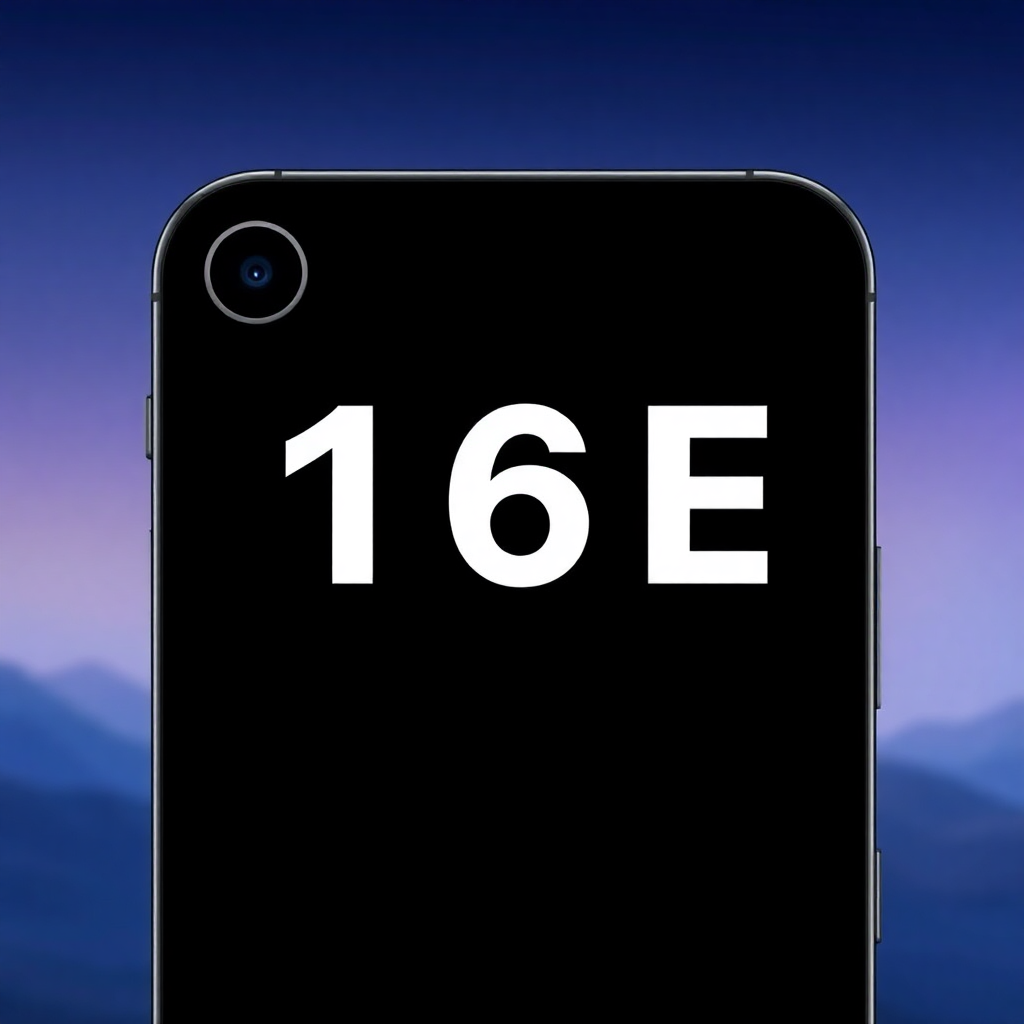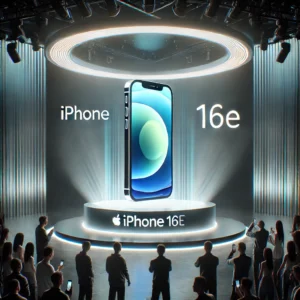Apple is gearing up for a major product launch on February 19, 2025, as the iPhone 16E, a budget-friendly device in the iPhone 16 lineup, is expected to make its debut. This device has garnered a great deal of attention due to its significant upgrades over previous budget models. In particular, rumors are circulating that Apple will abandon its iconic “SE” branding for this new device, opting for the iPhone 16E. This new name, along with the enhanced features, positions the iPhone 16E as a more competitive offering in the budget smartphone segment, potentially disrupting the market and raising the stakes for competitors.
In this article, we will dive deep into what makes the iPhone 16E a notable release, compare it to past models, analyze the potential name change, and discuss the implications of this launch for Apple’s strategy moving forward. By the end of this article, you’ll have a complete understanding of what to expect from Apple’s new budget phone and how it may reshape the future of the iPhone lineup.
The iPhone 16E: A Budget-Friendly iPhone with New Features
Apple’s budget-friendly iPhone models, historically branded as the “SE,” have always provided a compelling option for users who wanted to experience Apple’s ecosystem without breaking the bank. However, the iPhone 16E is set to break the mold. While still offering a more affordable price point than flagship models, the iPhone 16E includes several significant upgrades that bring it closer in terms of features and performance to its premium counterparts. Let’s take a closer look at what’s expected in the iPhone 16E.
Display: A 6.1-inch OLED Panel
One of the standout features of the iPhone 16E is its display. While previous SE models used LCD panels, the iPhone 16E will boast a 6.1-inch OLED screen. OLED technology allows for better contrast, deeper blacks, and more vibrant colors compared to LCD, which means the iPhone 16E will provide a more visually immersive experience. The decision to upgrade to OLED is a significant move, signaling that Apple is willing to offer premium display technology even in its budget phones.
This shift is important not just for visual quality, but also for overall user experience. OLED screens consume less power, which could contribute to longer battery life. Moreover, the addition of an OLED screen at this price point will make the iPhone 16E much more competitive with other high-end budget smartphones in the market.
Face ID: Replacing Touch ID
Another exciting change in the iPhone 16E is the adoption of Face ID. Apple’s Face ID technology, which uses advanced facial recognition to unlock the phone, make payments, and secure apps, has been a hallmark of its flagship devices for several years. Now, it is expected to make its way to the iPhone 16E.
This is a significant upgrade from previous SE models, which used Touch ID for fingerprint-based authentication. While Touch ID is still a reliable technology, Face ID offers greater security and convenience. Users will be able to unlock their phones with a simple glance, which is more seamless and faster than fingerprint recognition. The inclusion of Face ID is just one more way in which the iPhone 16E brings features typically reserved for premium models to a more affordable price range.
USB-C: A Welcome Change
Apple is expected to adopt a USB-C port for charging and data transfer in the iPhone 16E, a move that aligns with industry trends and EU regulations. For years, Apple’s devices have used the proprietary Lightning connector, but USB-C has become the standard across many other devices, including laptops, tablets, and other smartphones.
The shift to USB-C brings several advantages: faster charging, faster data transfer speeds, and improved compatibility with a wide range of accessories. Users will no longer need to carry multiple cables for different devices, which is a welcome change. The change also simplifies the charging process for people who own other Apple devices like the MacBook, iPad, and AirPods, all of which use USB-C.
Performance: The A18 Chip
Under the hood, the iPhone 16E will likely feature the A18 chip, Apple’s latest and most powerful mobile processor. The A18 chip will deliver a significant performance boost compared to the previous generation, making the iPhone 16E faster and more efficient. It will provide better performance in areas such as gaming, multitasking, and app processing. The A18 chip is built on a 3nm architecture, which offers better energy efficiency, ensuring that the iPhone 16E delivers strong performance without sacrificing battery life.
This chip is expected to bring Apple’s budget-friendly model closer to the high-end iPhones in terms of speed, allowing users to run demanding applications with ease. It will also enable more efficient machine learning processing and enhance the capabilities of the phone’s camera system, further strengthening its appeal.
Camera: A 48MP Rear Camera
The iPhone 16E is also expected to feature a significant upgrade in its camera system. Unlike previous budget iPhones, which featured 12MP rear cameras, the iPhone 16E will come with a 48-megapixel main camera. This upgrade brings Apple’s budget offering closer to the performance of flagship models, where 48MP cameras have become the standard.
The 48MP camera will allow users to take incredibly detailed photos, with improved color accuracy, better low-light performance, and greater overall clarity. Apple is also expected to include its computational photography features, which use AI and machine learning to improve image quality, making the iPhone 16E capable of taking stunning shots, even in challenging conditions.
In addition to the main camera, the iPhone 16E will likely feature a secondary ultra-wide camera for landscape shots and a more versatile overall camera setup. With these improvements, the iPhone 16E will cater to both casual photographers and enthusiasts, making it a competitive choice in the budget smartphone market.
The Potential Name Change: iPhone 16E Instead of SE
The iPhone SE series has been a staple of Apple’s budget lineup since 2016. However, the introduction of the iPhone 16E has raised questions about whether Apple will continue with the “SE” branding. There are strong indications that the iPhone 16E will not carry the familiar “SE” tag and will instead be positioned as part of the iPhone 16 family.
Why the Name Change?
There are several reasons why Apple might decide to rebrand its budget iPhone. The iPhone SE has always been seen as a more budget-friendly, lower-tier option, distinct from the flagship models. While the SE has always offered solid performance, it has been positioned as an entry-level device. By naming the new budget phone the iPhone 16E, Apple could be signaling that this device is no longer just an affordable alternative but a device that belongs within the same family as the flagship iPhone 16 models.
This rebranding could help Apple market the 16E as a more premium device, while still offering it at an accessible price point. The “E” in the name could stand for “entry-level,” allowing Apple to differentiate it from the standard iPhone 16, while still positioning it as a powerful option for users who want the iPhone experience without the high cost.
Additionally, the name change could help Apple escape the perception that the SE models were simply “older” iPhones with budget components. The iPhone 16E, with its advanced features like Face ID, a USB-C port, and a powerful A18 chip, will feel much more in line with the current iPhone lineup, making it easier for customers to see it as an attractive, modern option.
What Does This Mean for Apple’s Strategy?
Rebranding the iPhone SE as the iPhone 16E is part of Apple’s broader strategy to unify its lineup and appeal to a wider audience. By giving the iPhone 16E the same “16” branding as the flagship models, Apple is showing that the budget offering is no longer an afterthought but a device that’s just as capable as its more expensive counterparts.
This strategy will also help Apple compete more effectively against other manufacturers, particularly in markets where price sensitivity is a key factor in purchasing decisions. The rebranding could make the iPhone 16E more appealing to users who might have previously considered the SE models outdated or underpowered.
Comparison with Previous Models
The iPhone 16E is expected to surpass its predecessors in several key areas. If we compare it to the iPhone SE (2024), the differences are significant.
Design
The iPhone SE (2024) had a 4.7-inch display, which was smaller and less visually immersive compared to the 6.1-inch OLED screen of the iPhone 16E. Additionally, the SE design was based on the older iPhone 8, with chunky bezels and a physical home button. In contrast, the iPhone 16E is expected to have a more modern design, with thinner bezels and no physical home button, using Face ID for unlocking.
Performance
The SE (2024) was powered by the A15 chip, while the iPhone 16E is expected to feature the more powerful A18 chip. This means that the iPhone 16E will have better performance in gaming, app processing, and general speed, along with enhanced machine learning capabilities.
Camera System
The iPhone SE (2024) had a single 12MP rear camera, while the iPhone 16E will have a much more powerful 48MP camera system. This upgrade brings the iPhone 16E closer to the performance of flagship models, with enhanced photography capabilities and better image quality, especially in low-light conditions.
Pricing and Market Positioning
Despite its premium features, the iPhone 16E is expected to be priced affordably, with analysts predicting a starting price around $499. This price point would position the iPhone 16E as an attractive alternative to other budget-friendly smartphones from brands like Samsung, Google, and OnePlus.
By offering flagship-level features at a lower price, Apple is aiming to appeal to a broader range of consumers, especially those who want the iPhone experience without the premium price tag. The iPhone 16E could attract users who have been hesitant to buy an iPhone due to the high cost of flagship models.
What to Expect at the February 19th Event
The February 19th event is shaping up to be an exciting one for Apple fans. In addition to unveiling the iPhone 16E, Apple may also introduce other new products or services. The event will likely feature a polished presentation, with Apple showcasing the iPhone 16E’s new features, including its OLED display, Face ID, and A18 chip.
Expect Apple to emphasize how the iPhone 16E fits into the broader iPhone ecosystem, making it clear that users don’t have to sacrifice performance or features to get an affordable iPhone. The event will be streamed online, allowing fans and tech enthusiasts worldwide to get a closer look at the iPhone 16E.
The iPhone 16E represents a significant leap forward for Apple’s budget lineup, offering powerful features at an affordable price. With its OLED display, A18 chip, USB-C port, and 48MP camera, the iPhone 16E will deliver a premium experience for users who want the iPhone experience without the premium price tag. The potential rebranding of the SE to the 16E further positions this device as a serious contender in the budget smartphone market.
Feel free to check out our other website at :aibrainpowered.com












